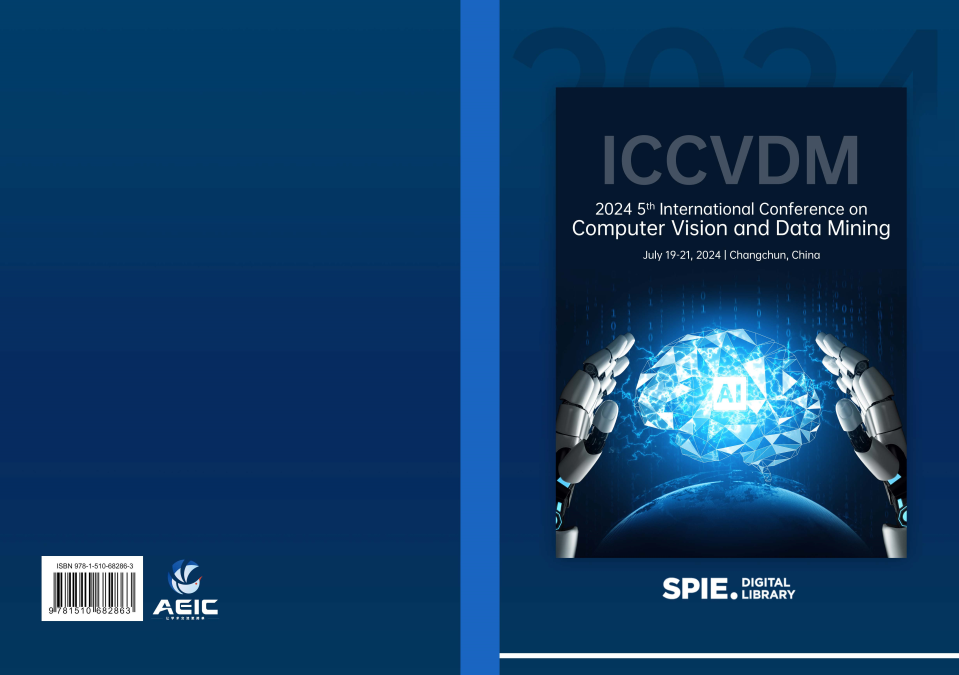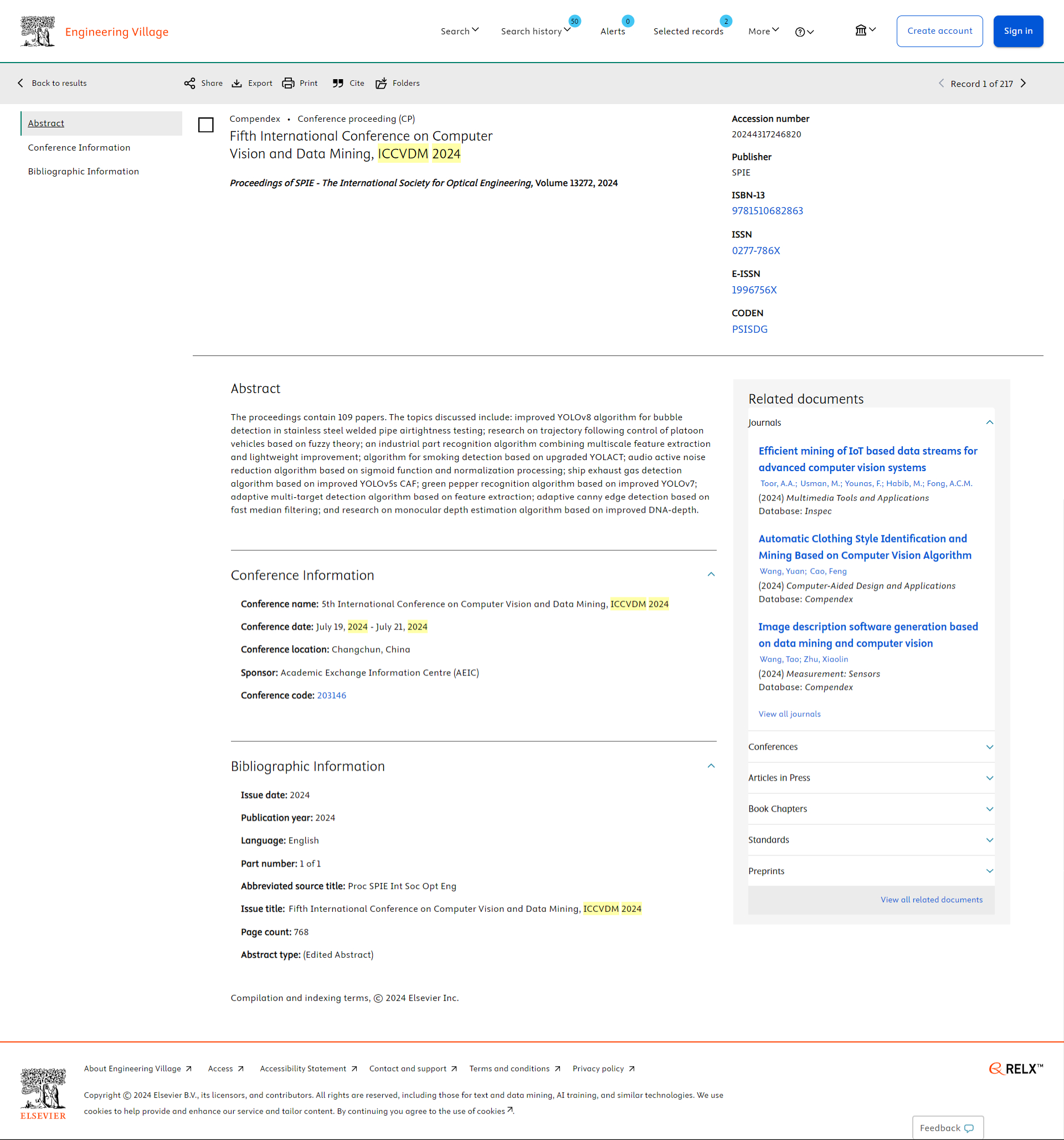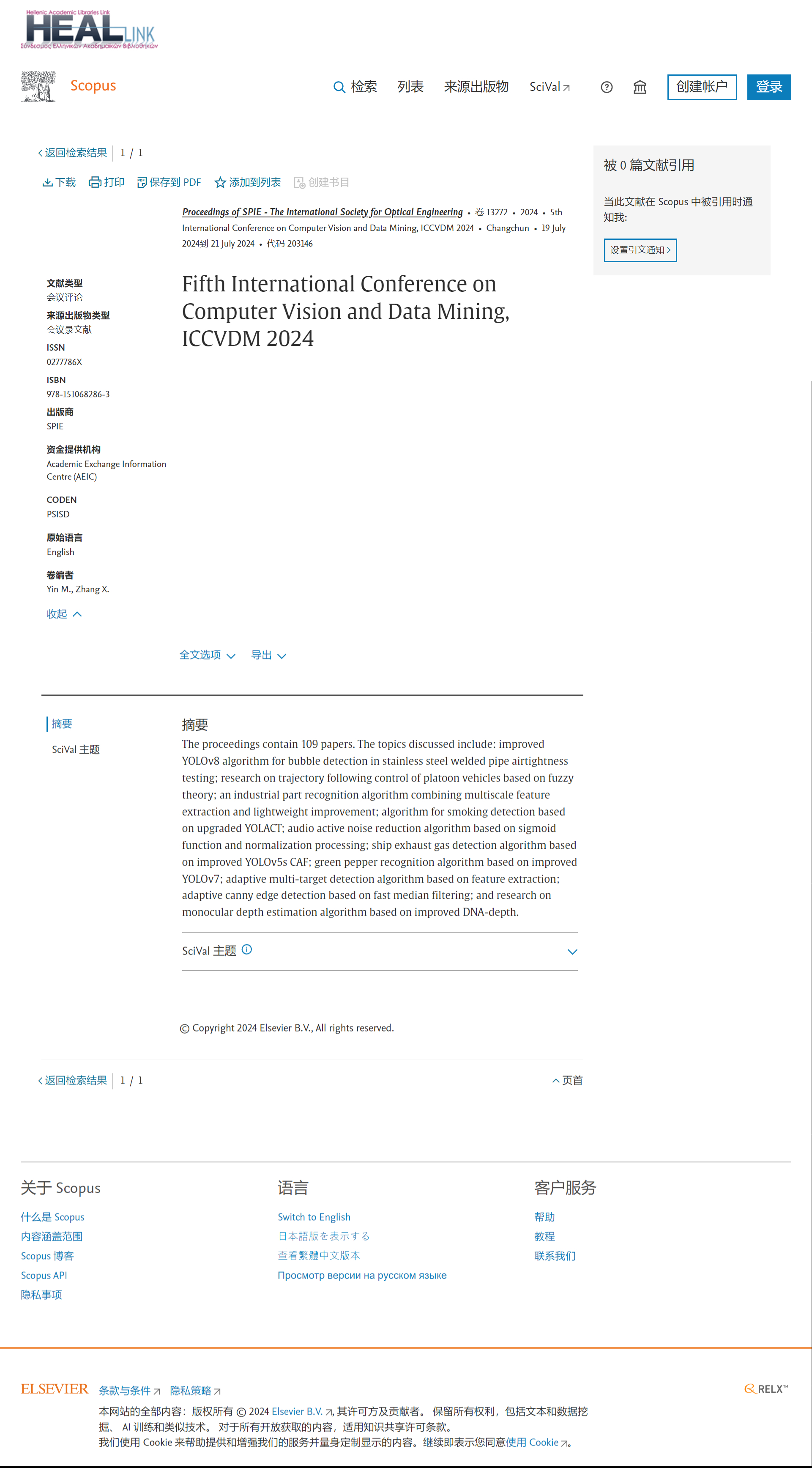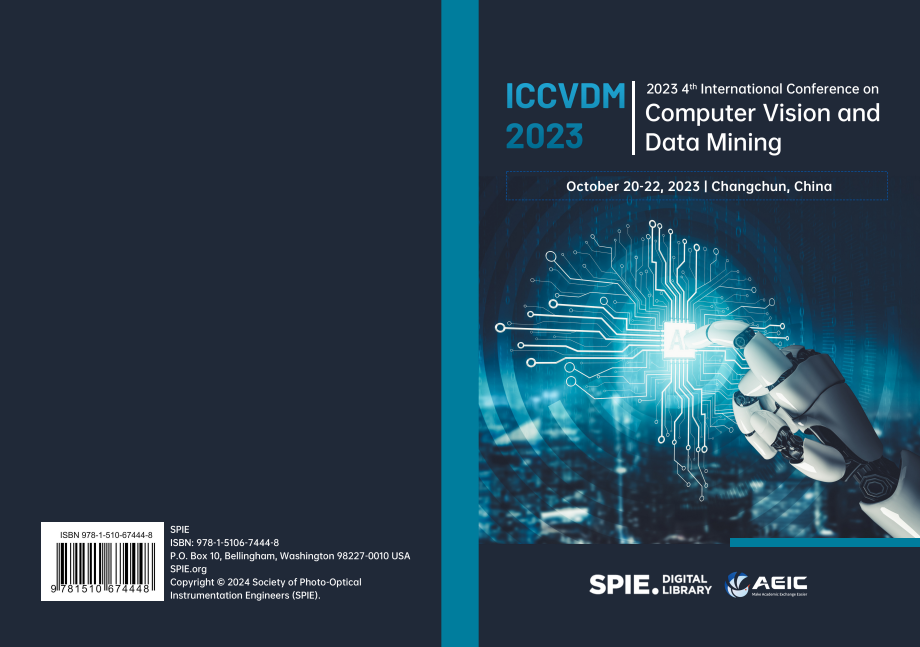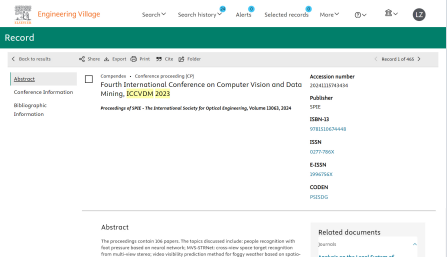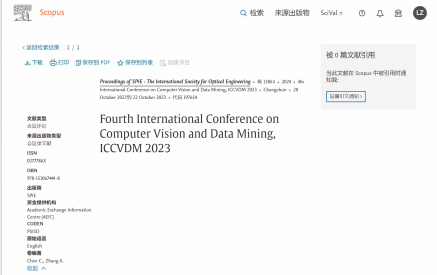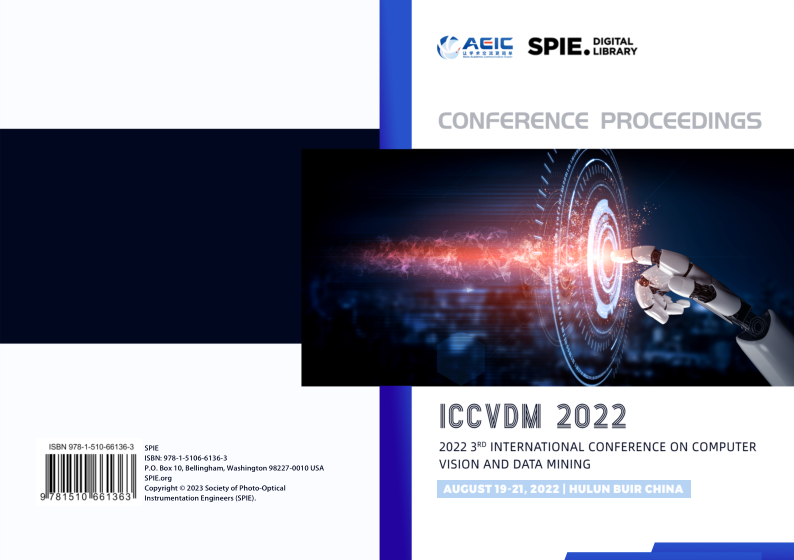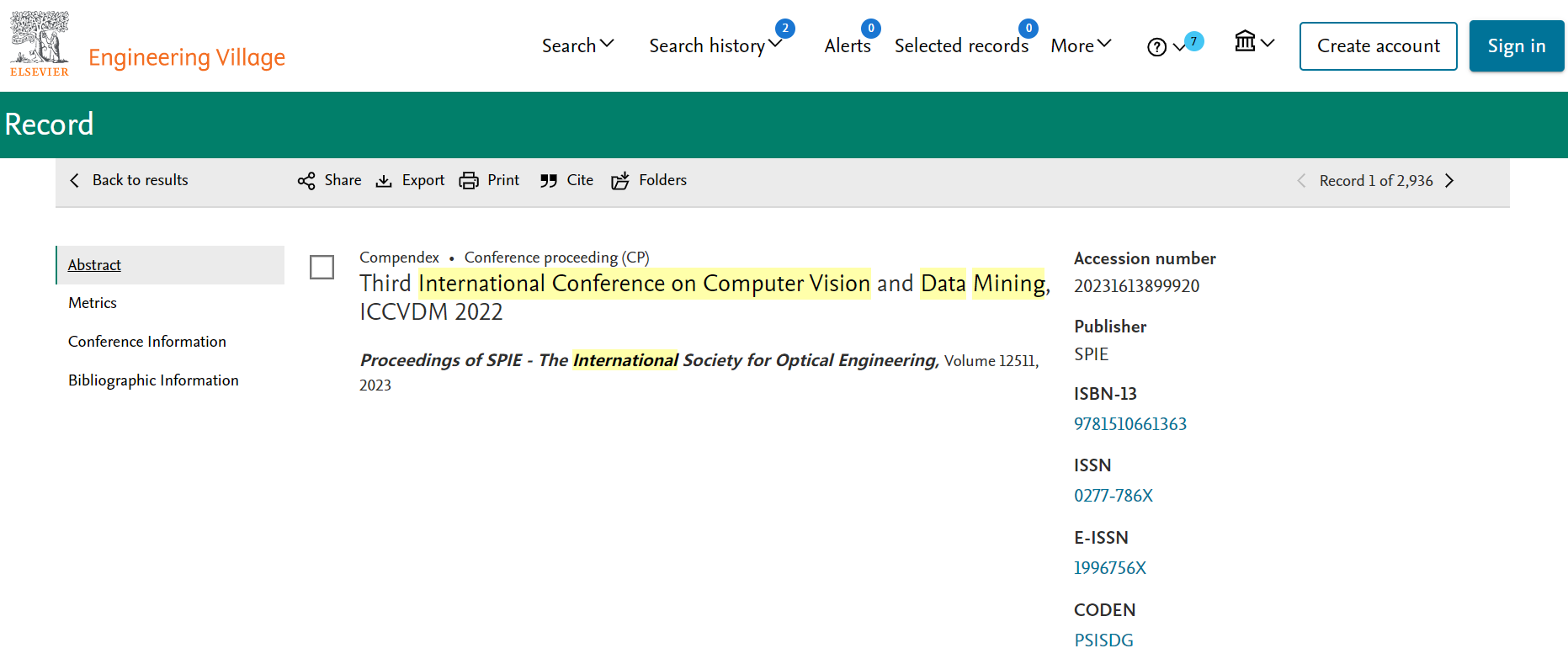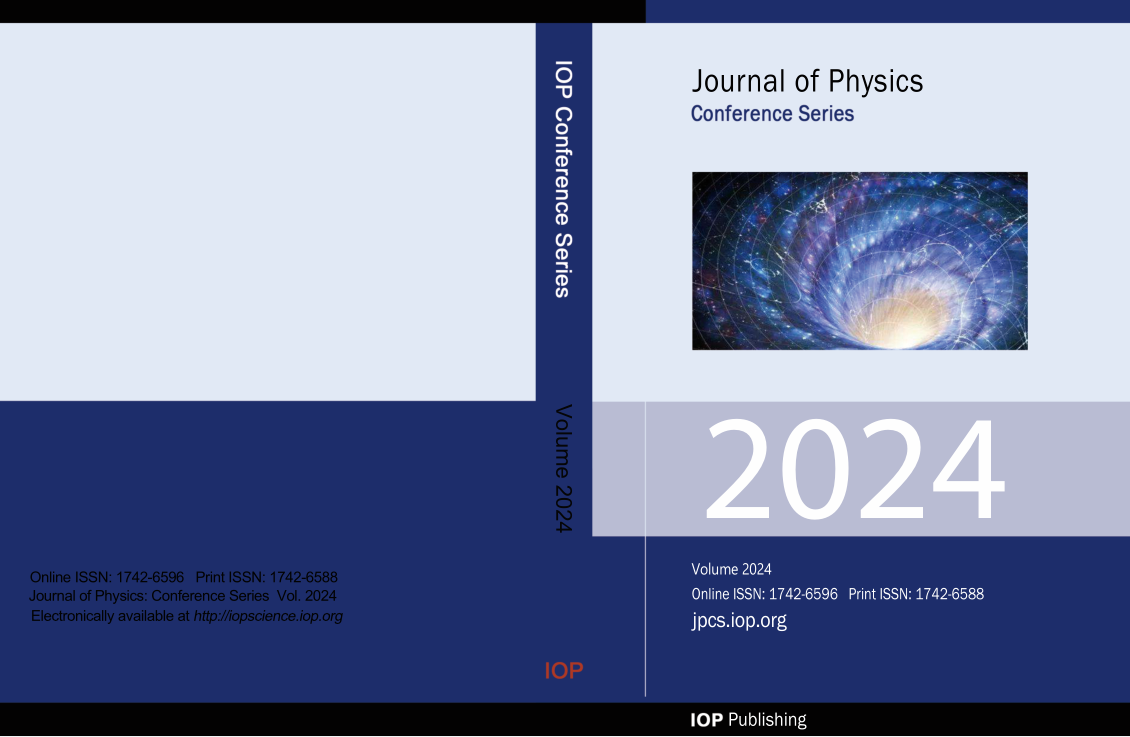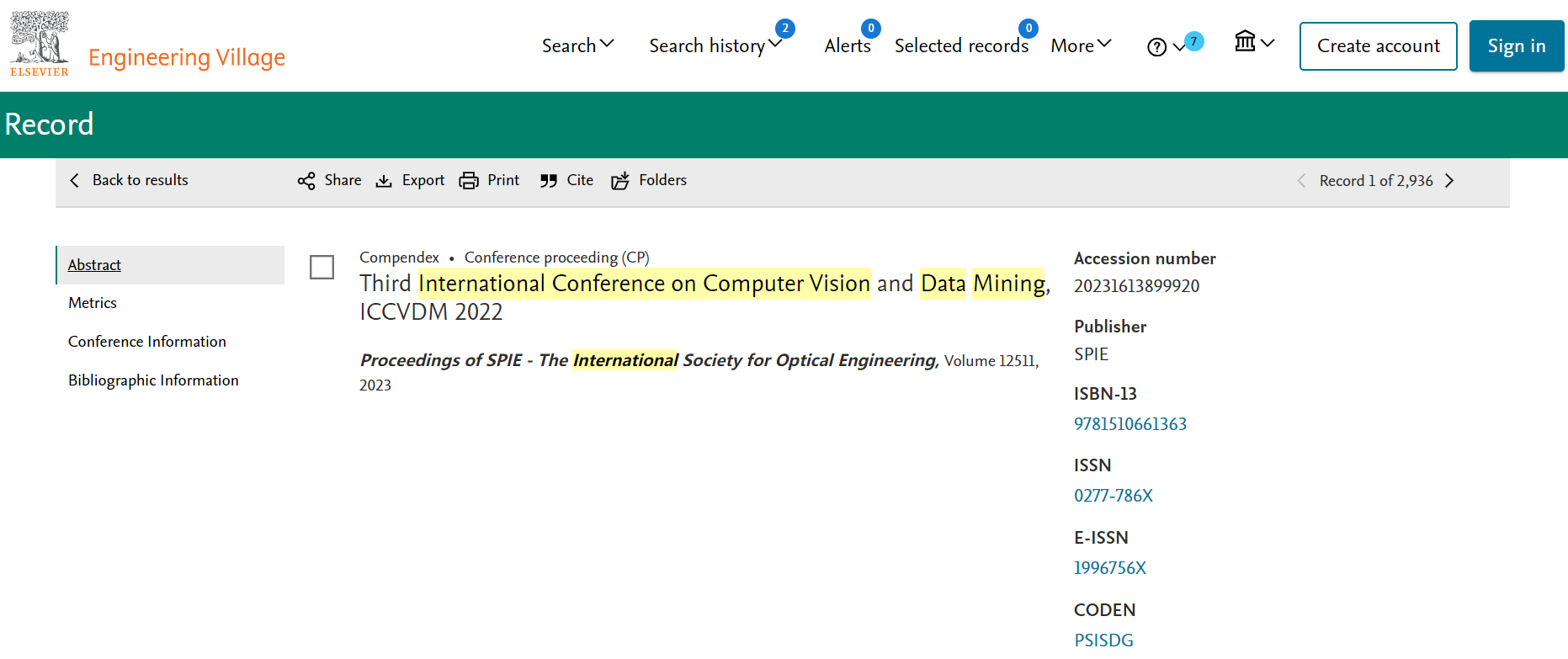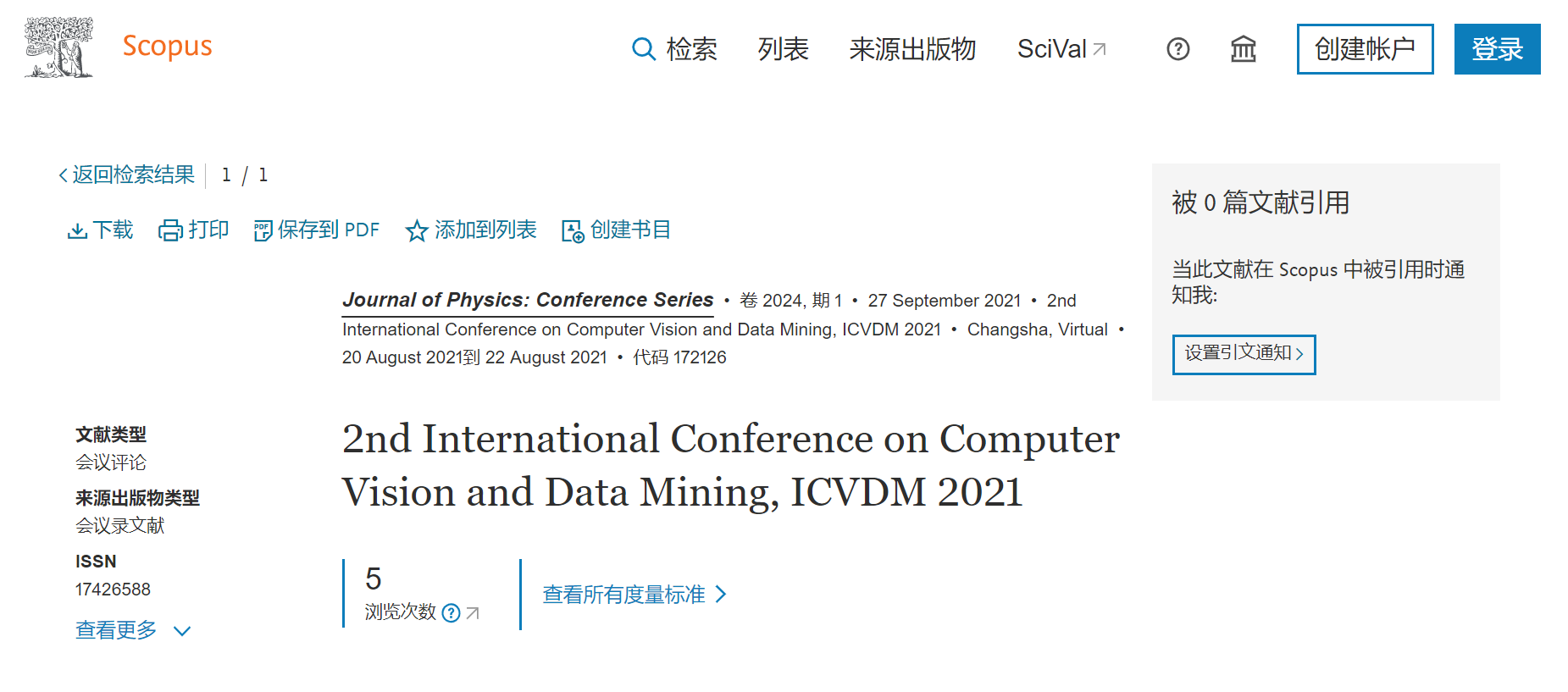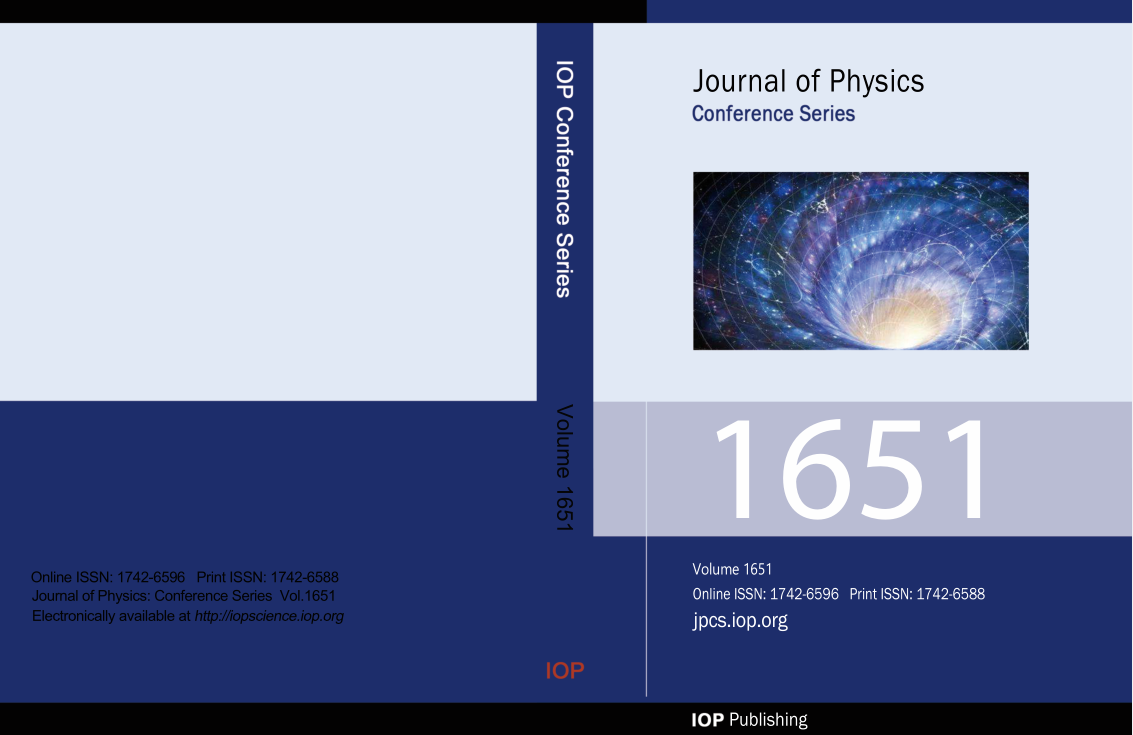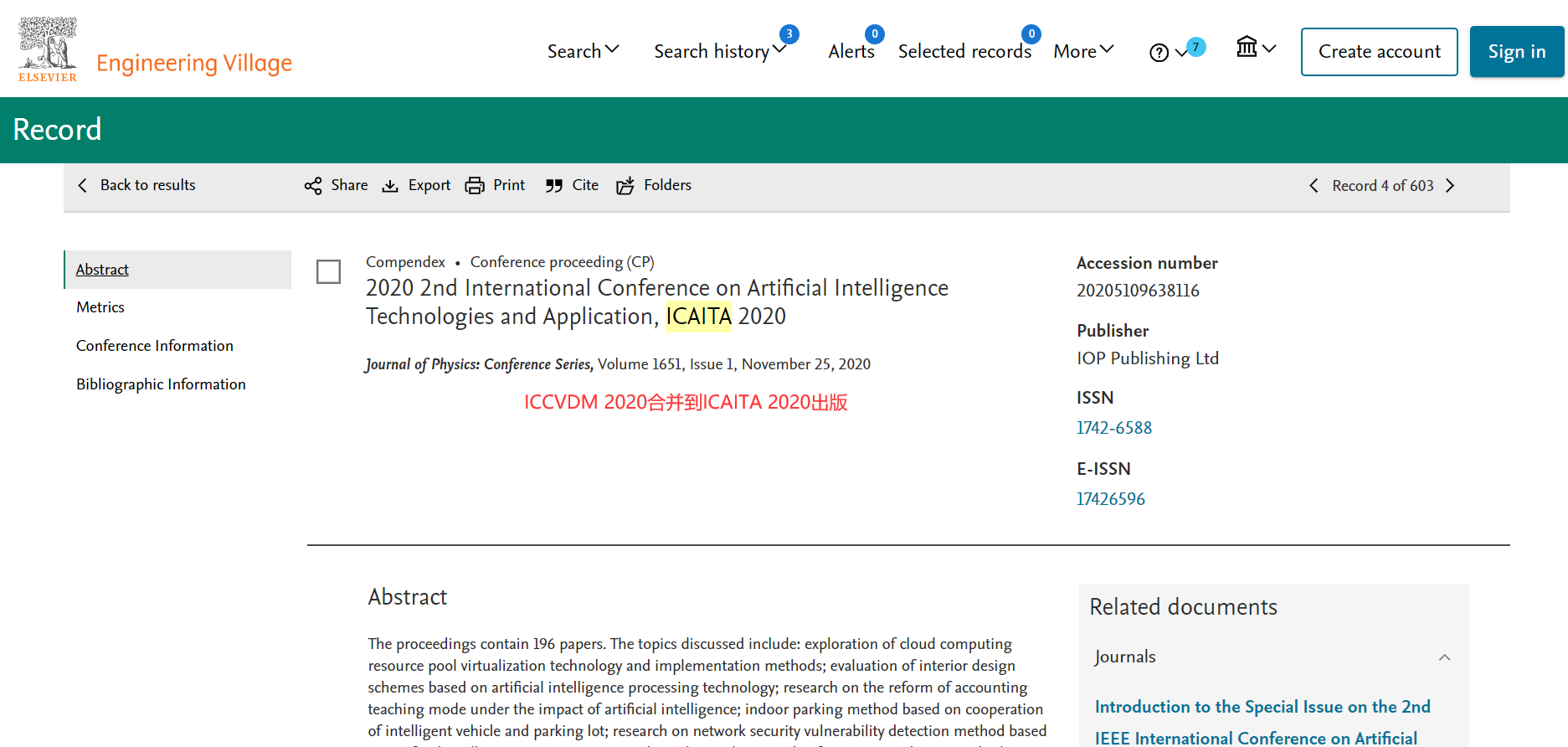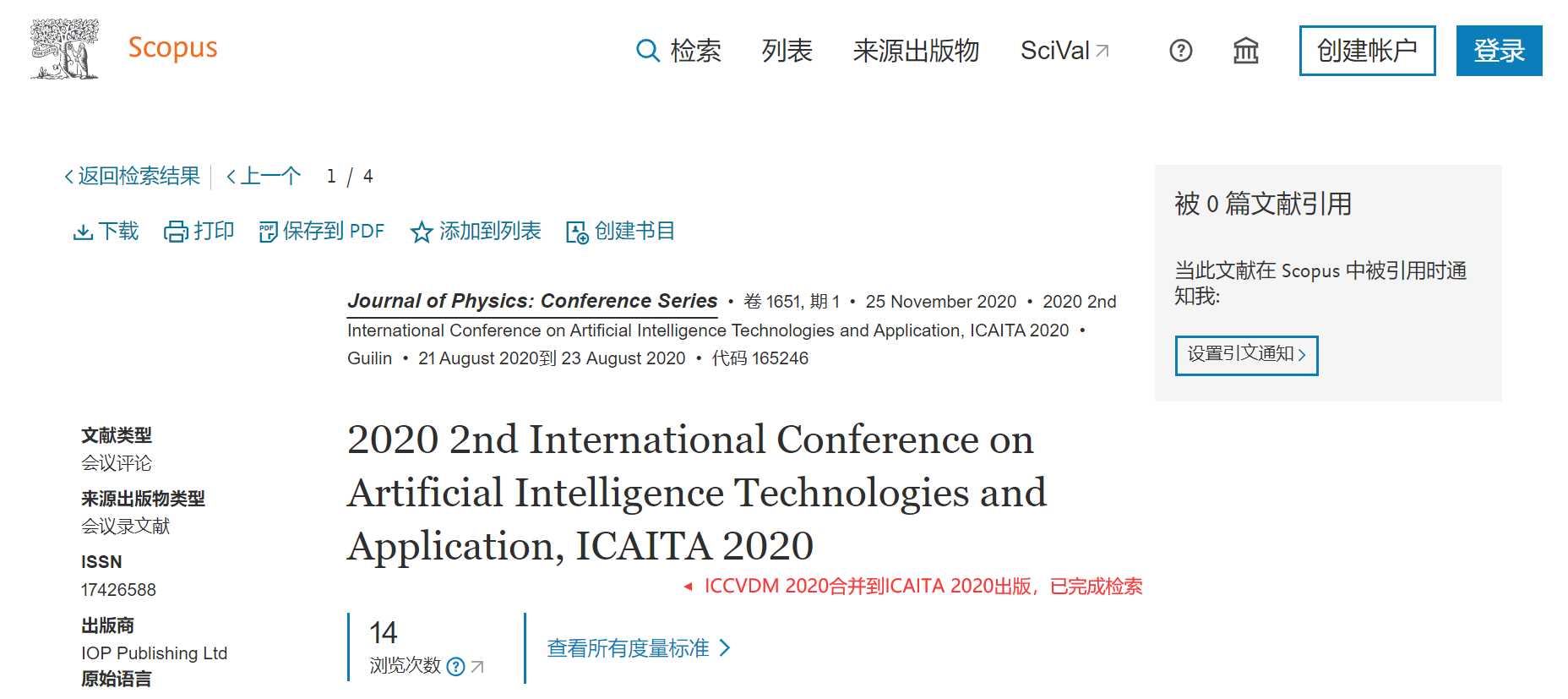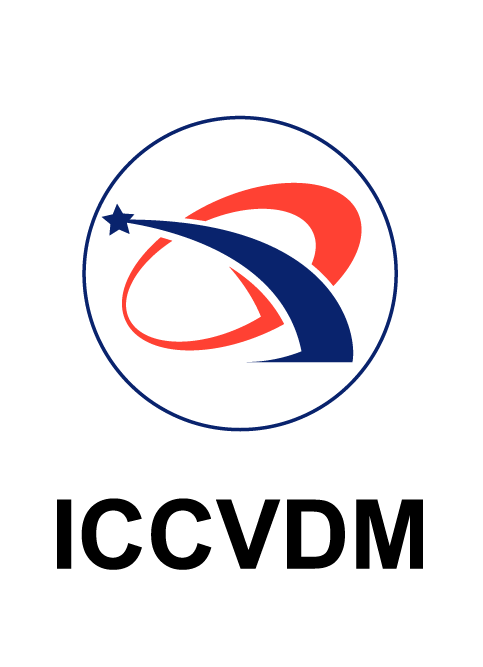

All papers, both invited and contributed, will be reviewed by two or three expert reviewers from the conference committees. After a careful reviewing process, all accepted papers of ICCVDM 2025 will be published in IEEE and will be submitted to EI Compendex,Scopus for indexing.
All conference proceedings paper can not be less than 4 pages.
ICCVDM 2024
| Cover | Ei Compendex | Scopus | ||||
ICCVDM 2023
| Cover | Ei Compendex | Scopus | ||||
ICCVDM 2022
| Cover | Ei Compendex | Scopus | ||||
ICCVDM 2021
| Cover | Ei Compendex | Scopus | ||||
ICCVDM 2020
| Cover | Ei Compendex | Scopus | ||||
Note: All submitted articles should report original research results, experimental or theoretical, not previously published or under consideration for publication elsewhere. Articles submitted to the conference should meet these criteria. We firmly believe that ethical conduct is the most essential virtue of any academics. Hence, any act of plagiarism or other misconduct is totally unacceptable and cannot be tolerated. |
